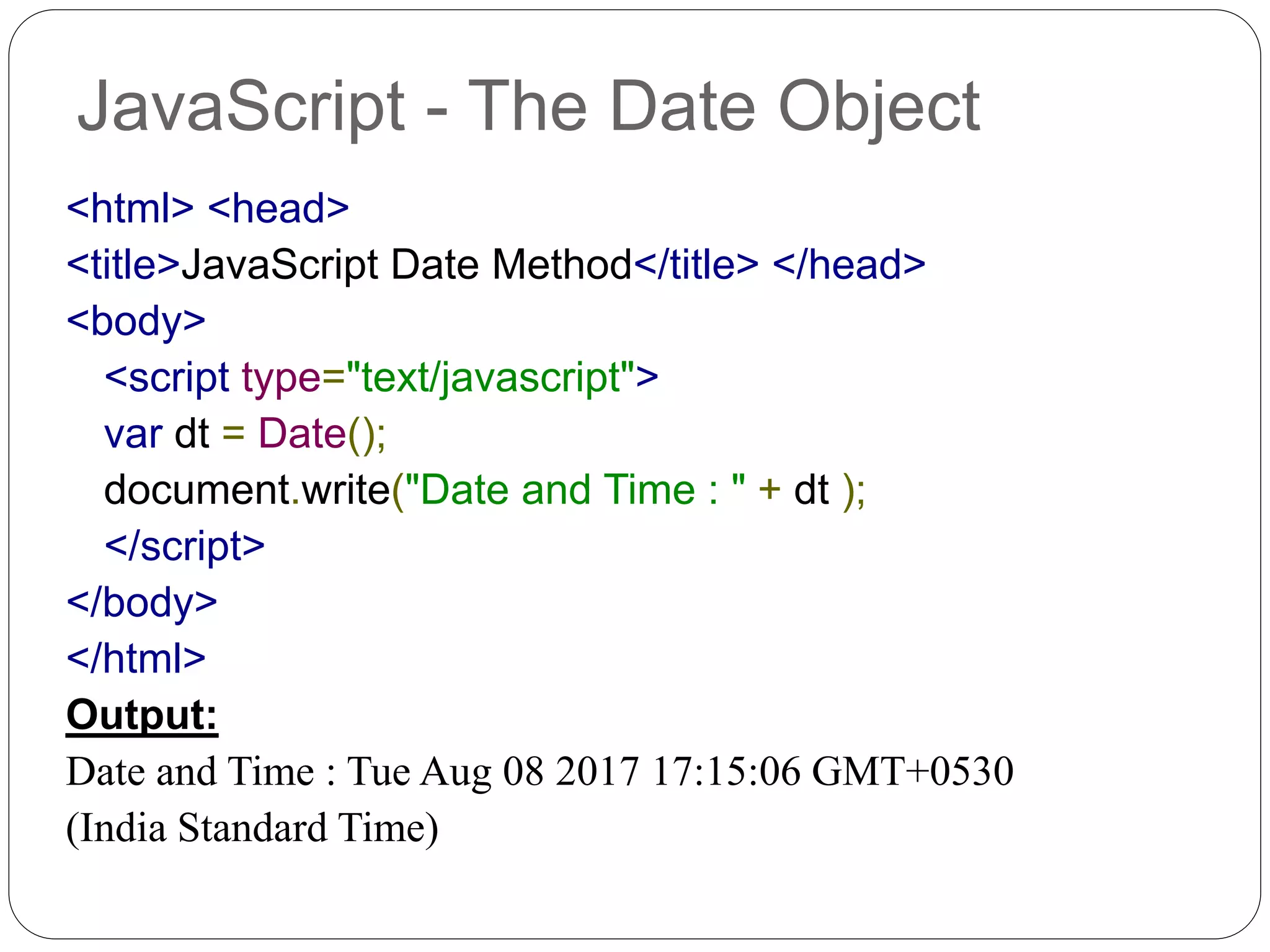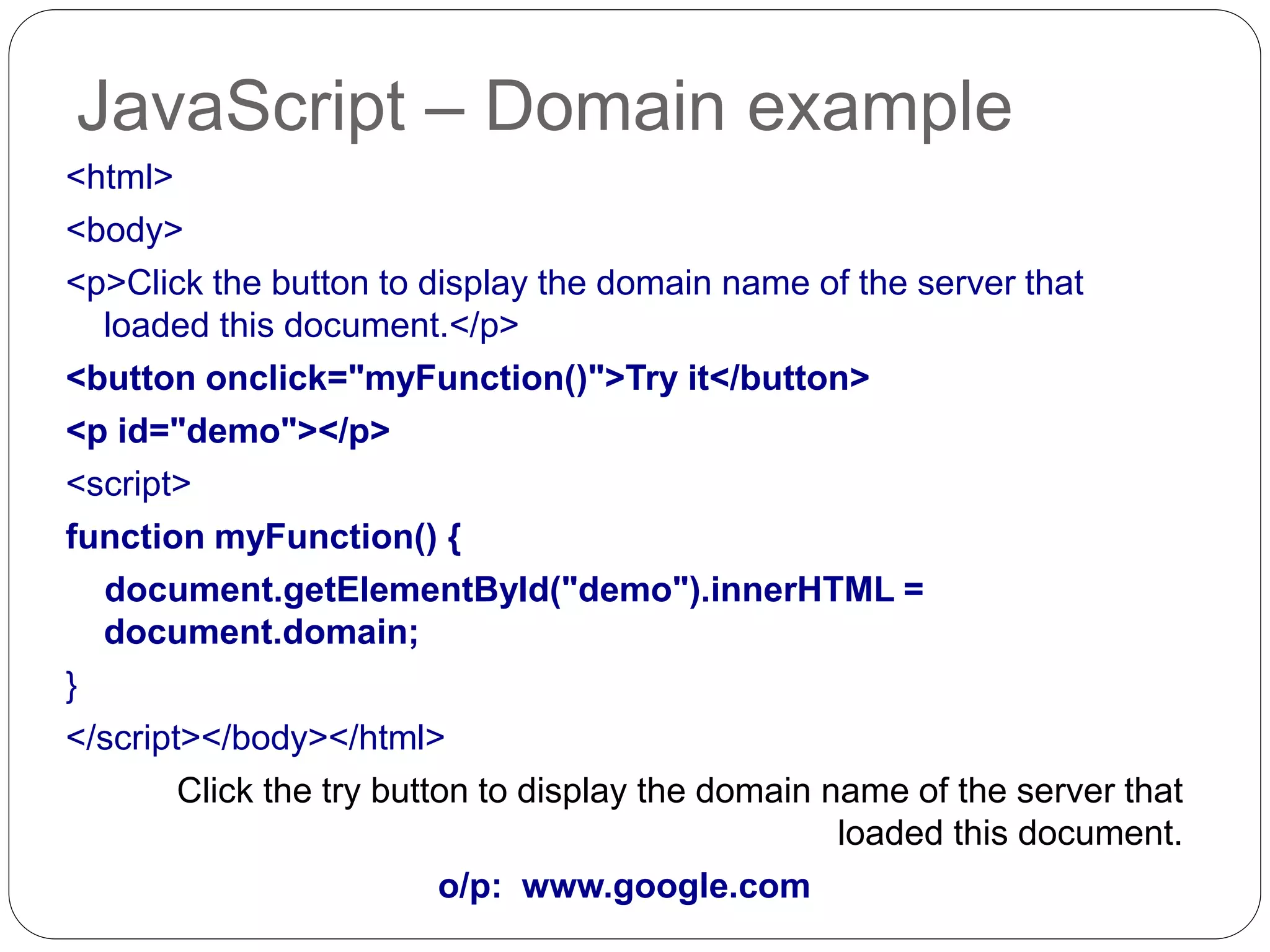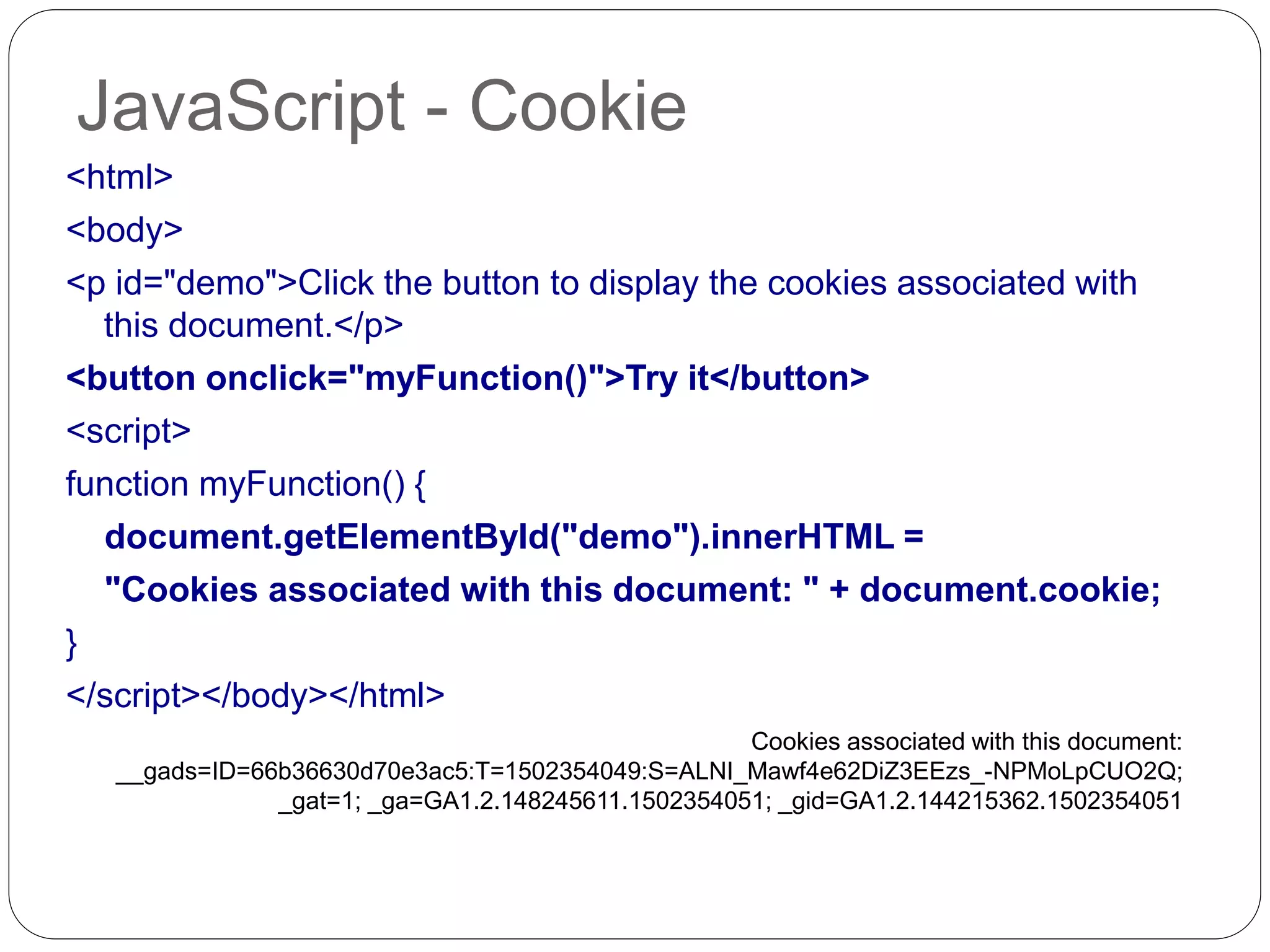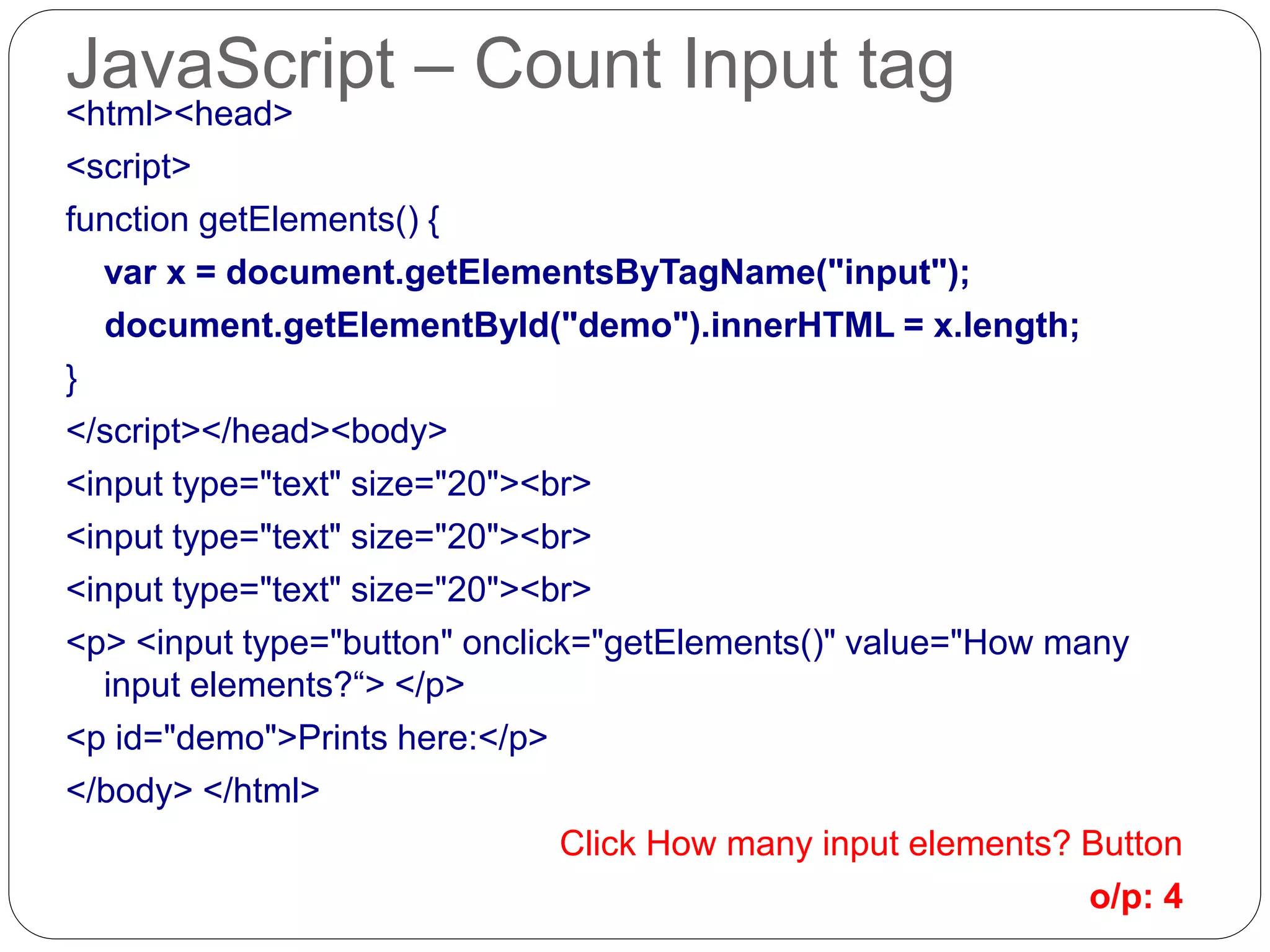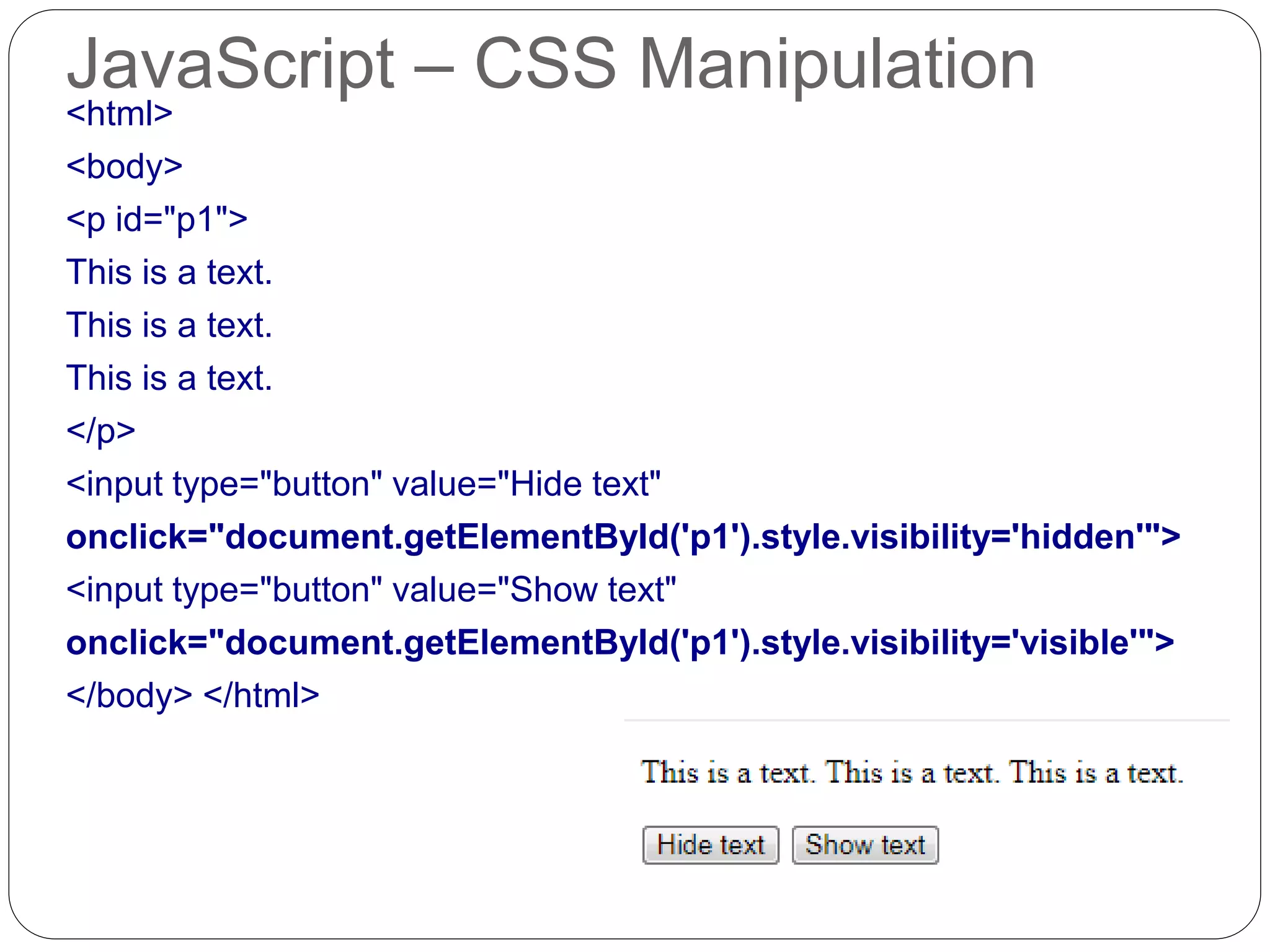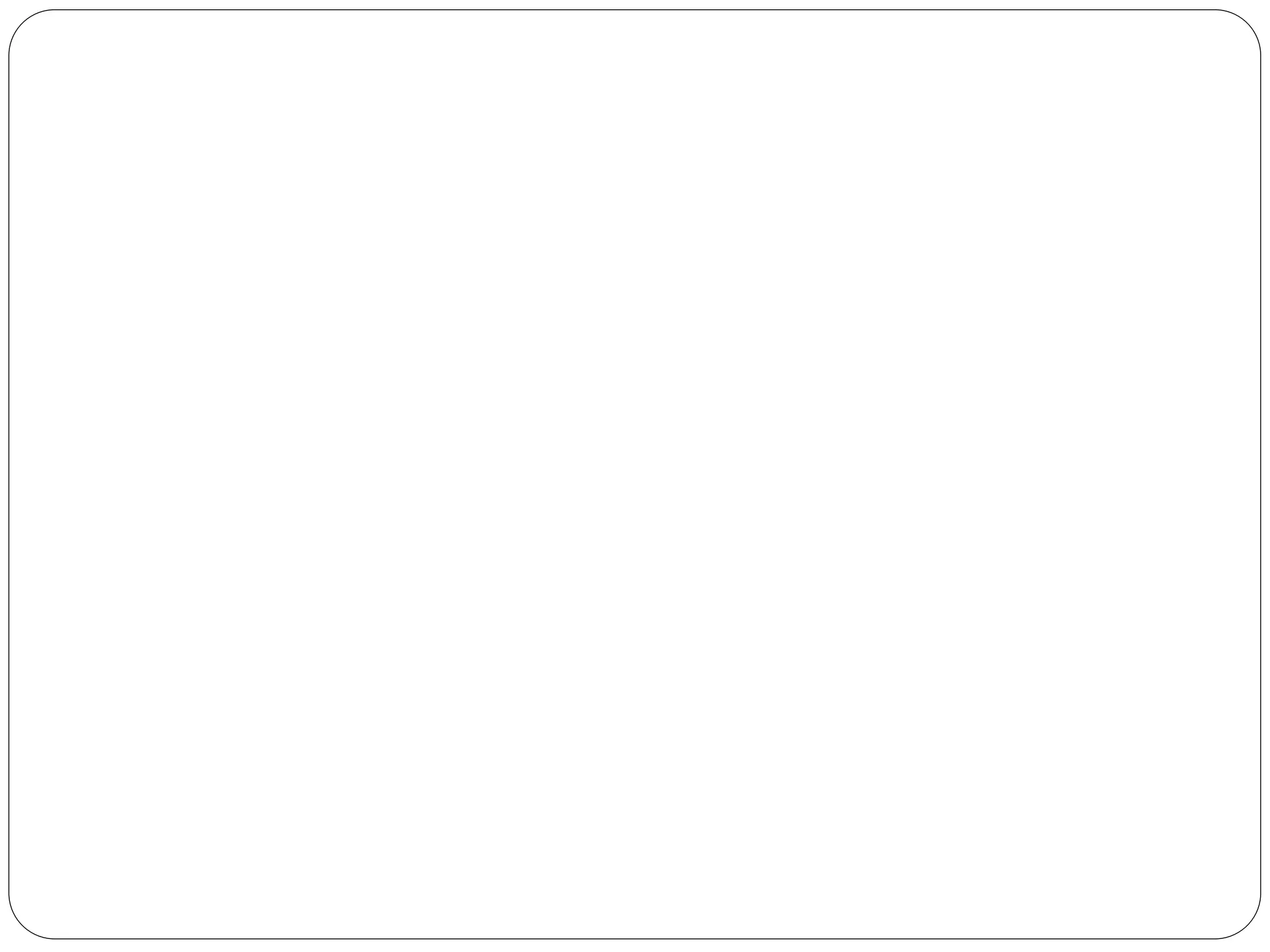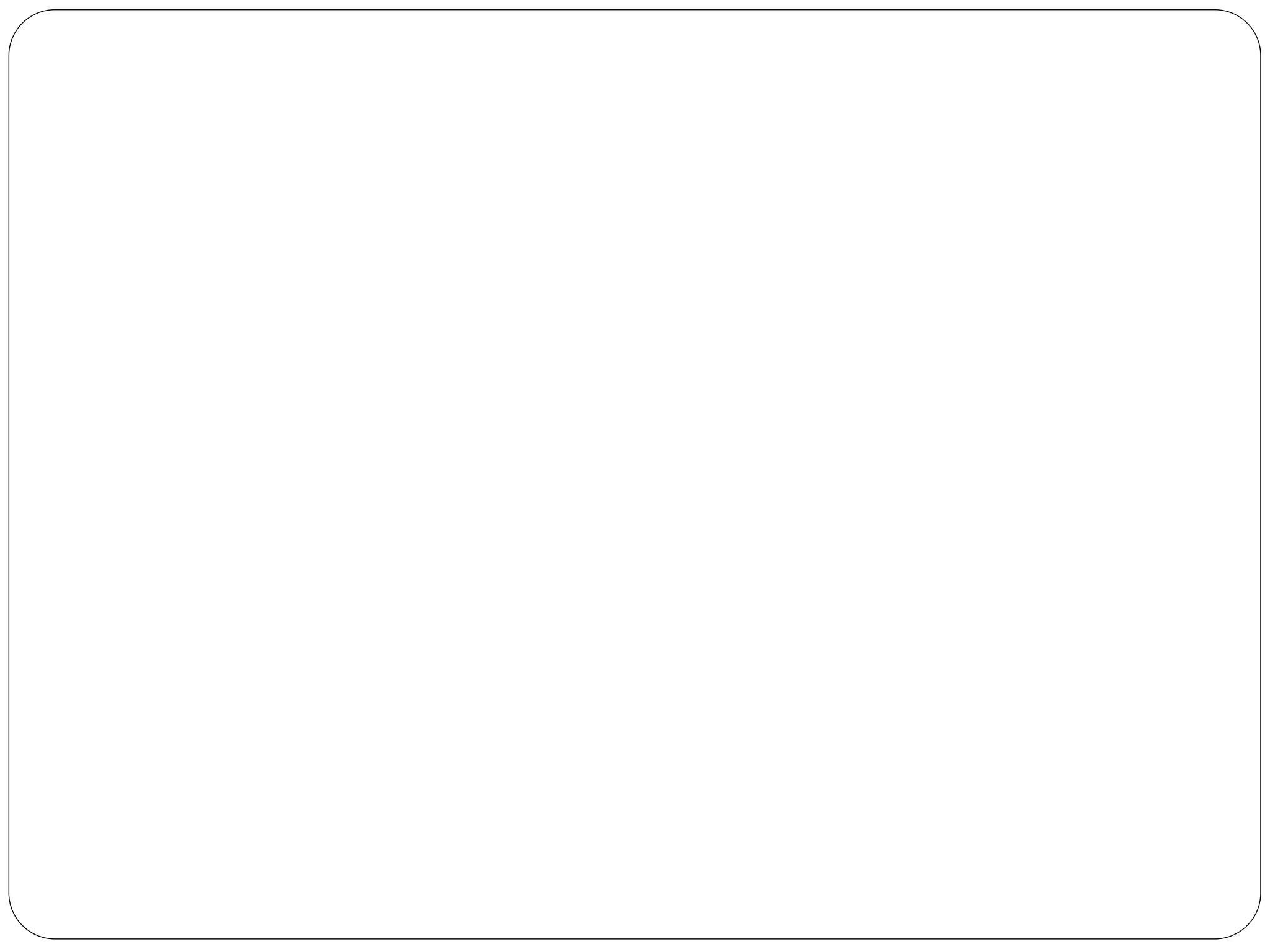The document discusses the JavaScript Document Object Model (DOM). It explains that every web page can be considered an object inside a browser window. The DOM represents the HTML document displayed in the window and has properties that allow accessing and modifying document content. It outlines the hierarchical structure of objects in a web document, including the window, document, form, and form control element objects. It provides examples of using DOM properties and methods to get elements by ID, name, or tag name and manipulate the document.
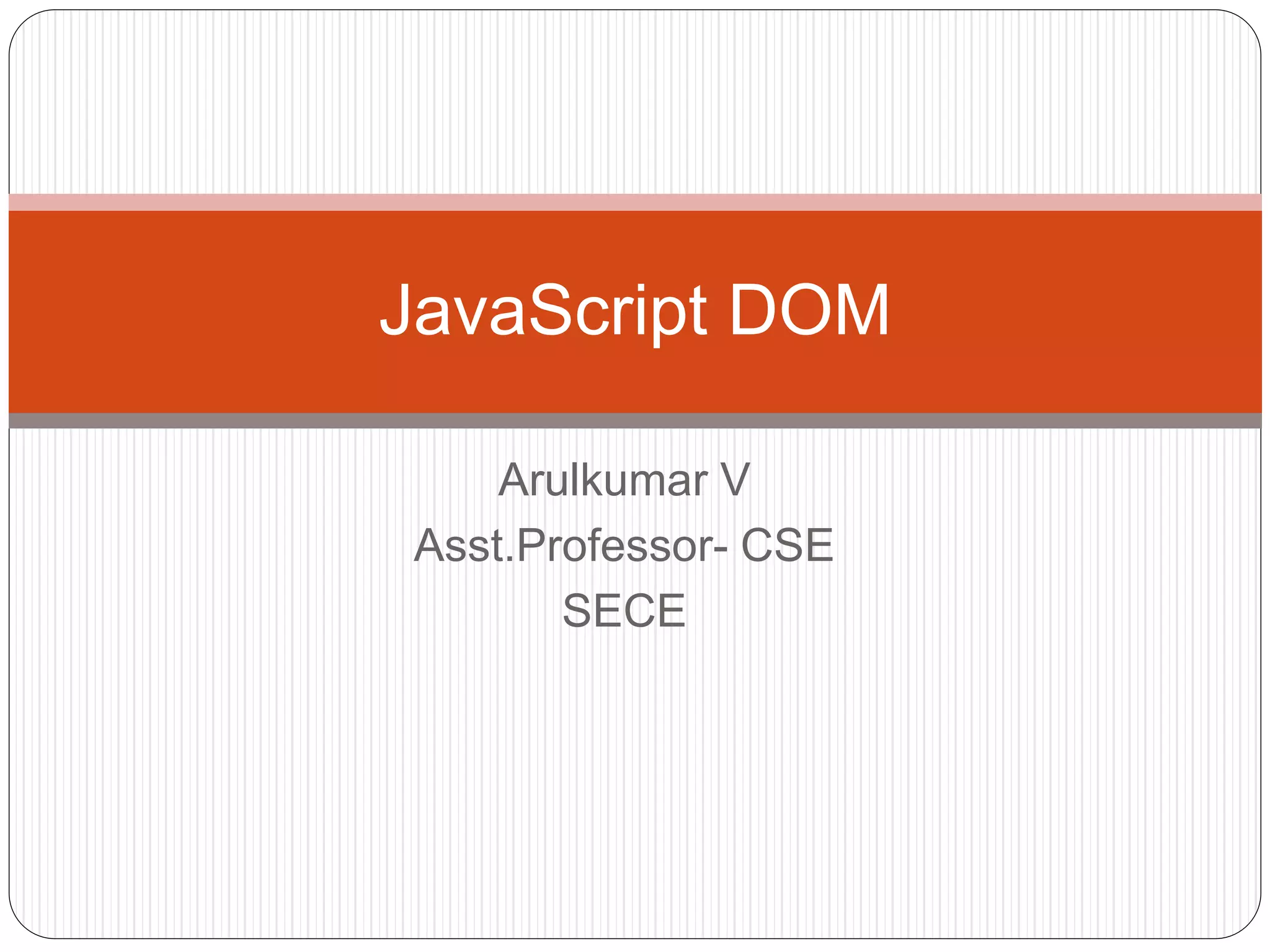
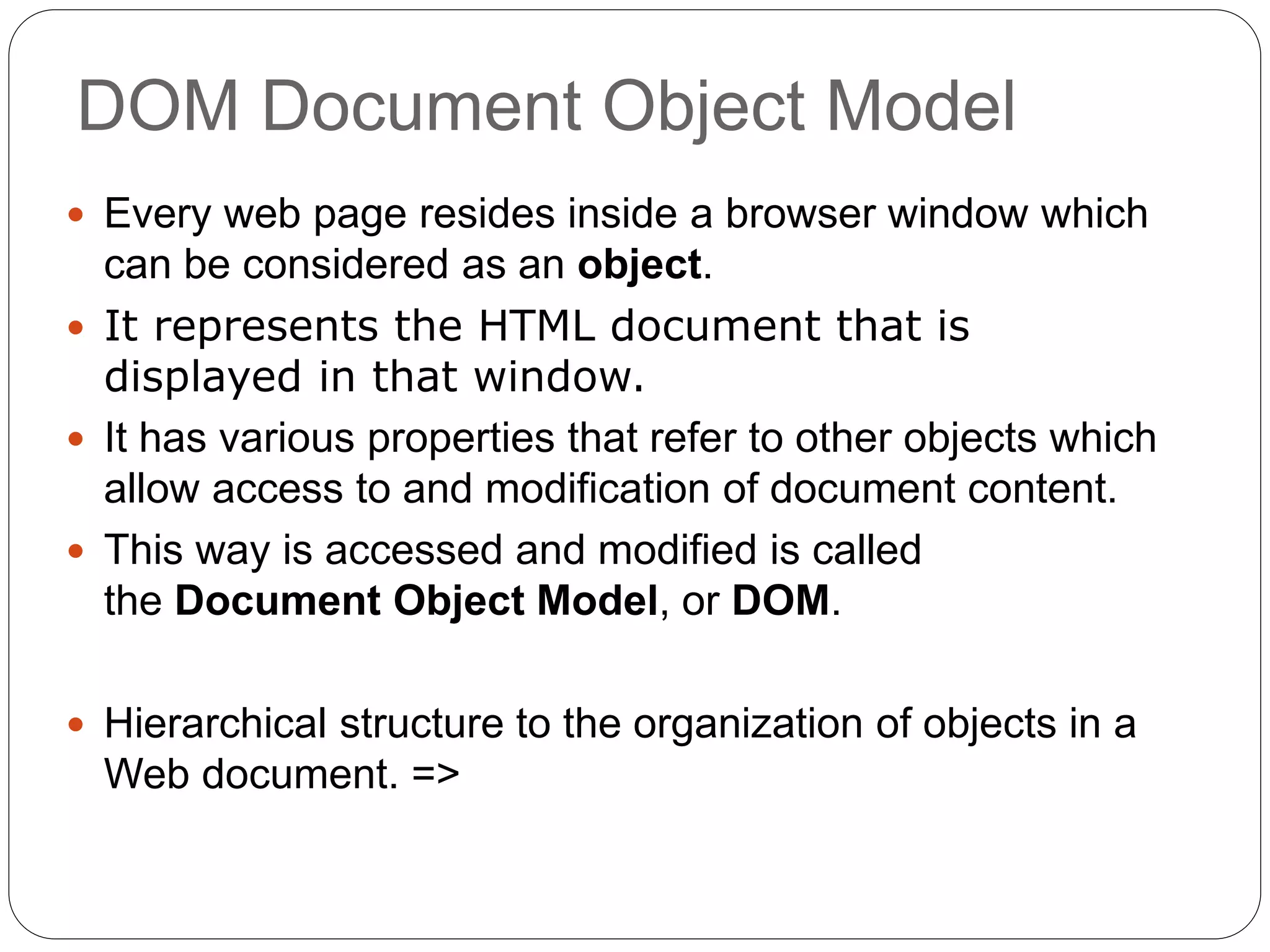
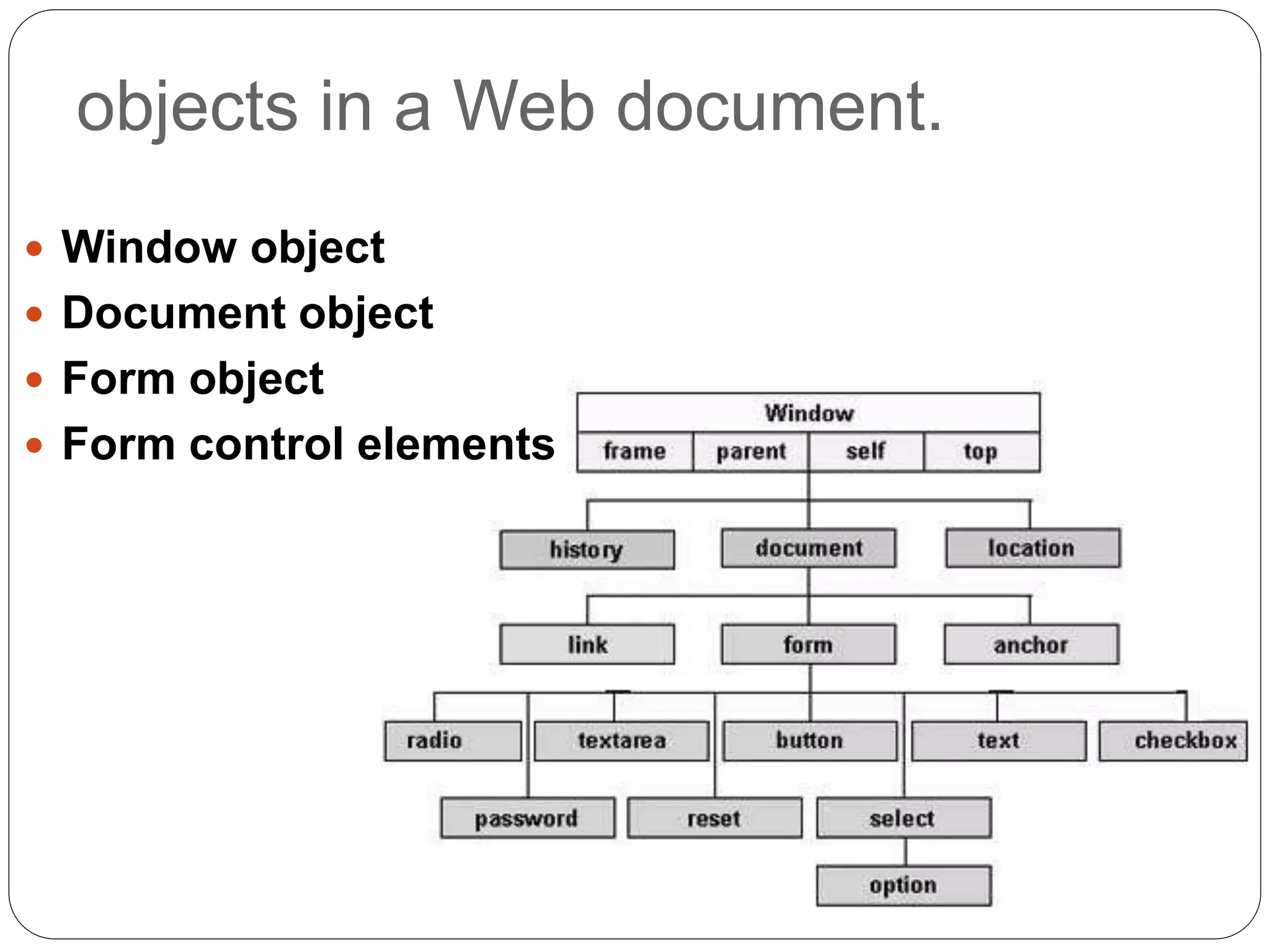
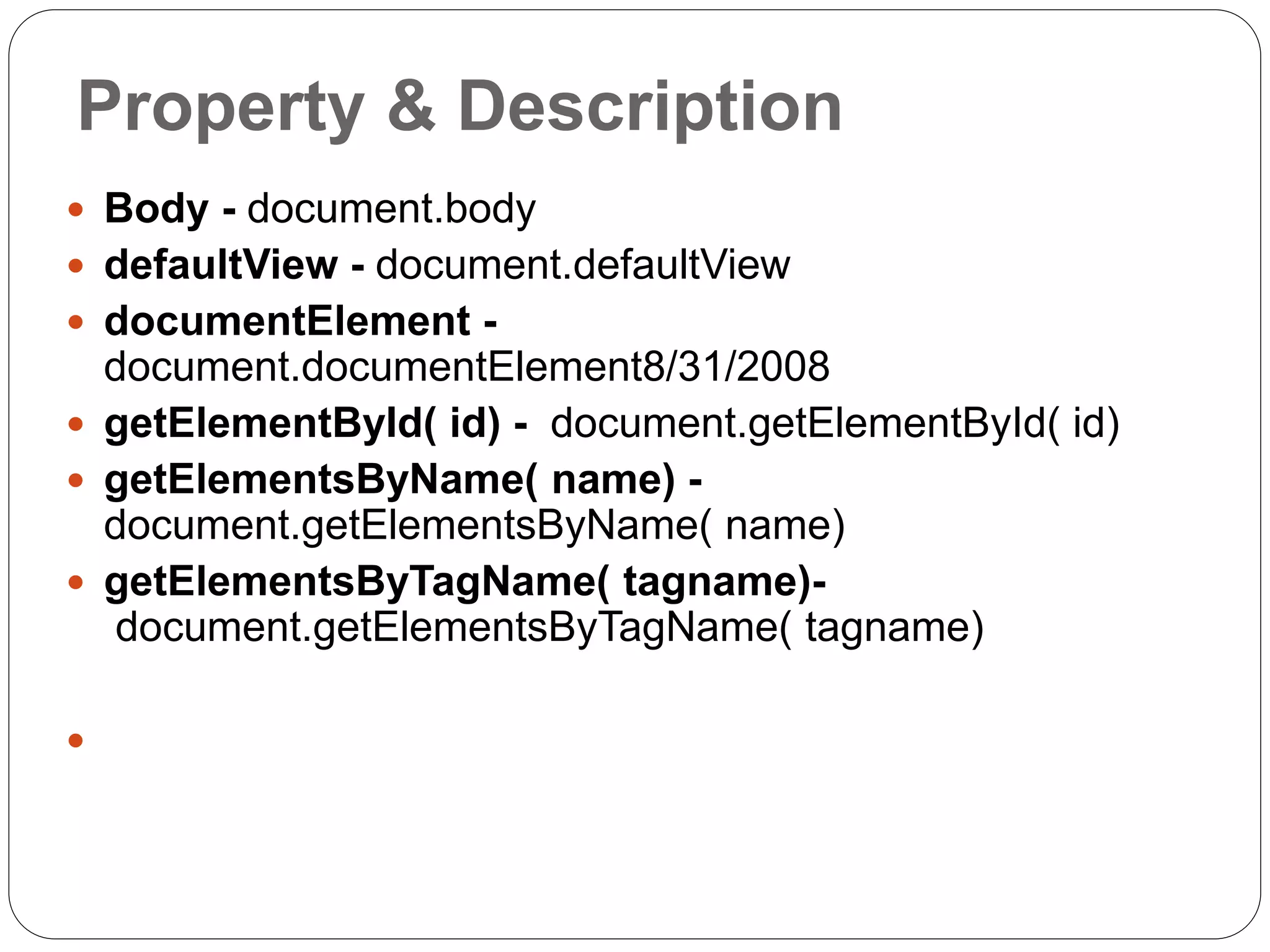
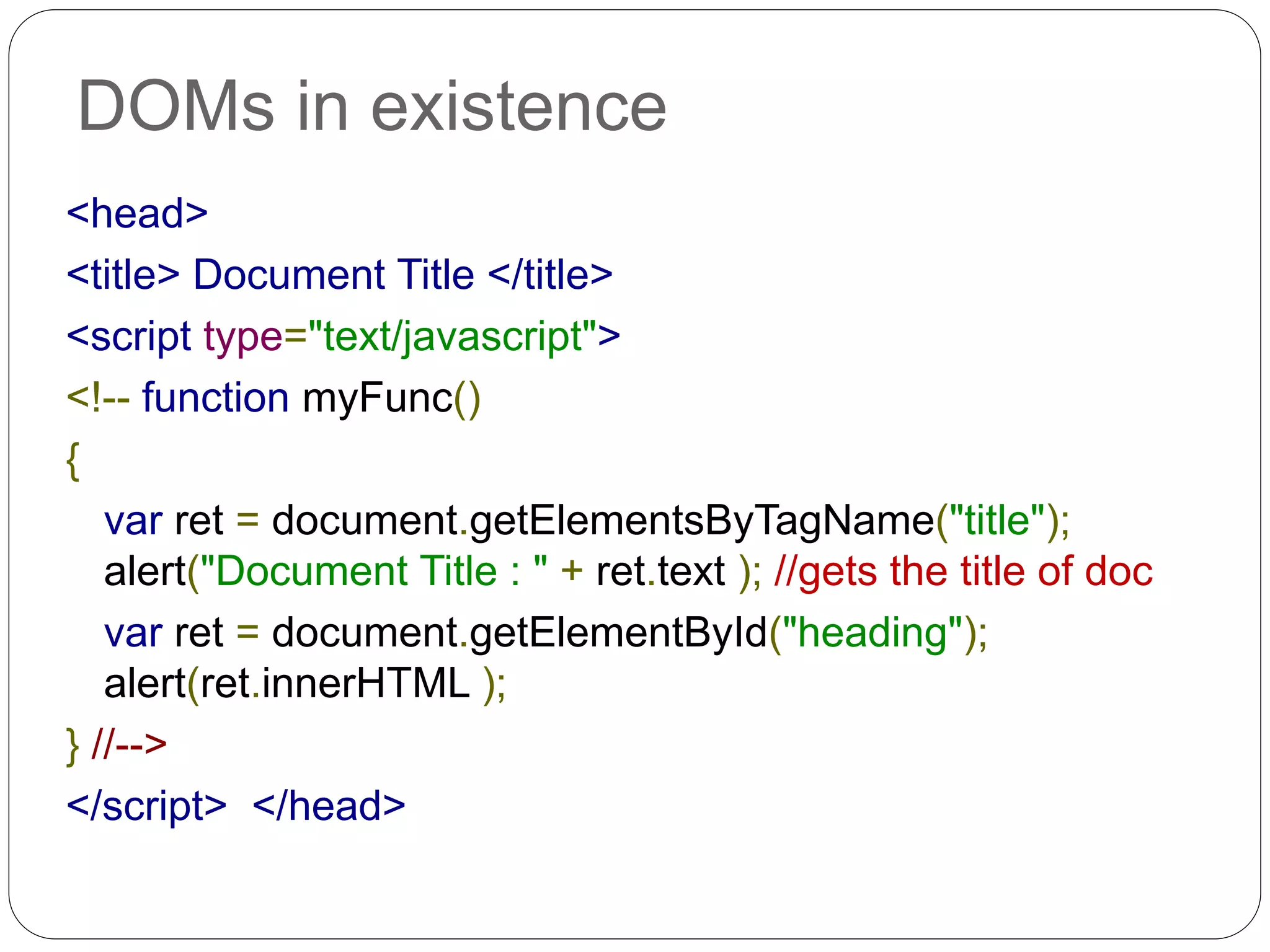
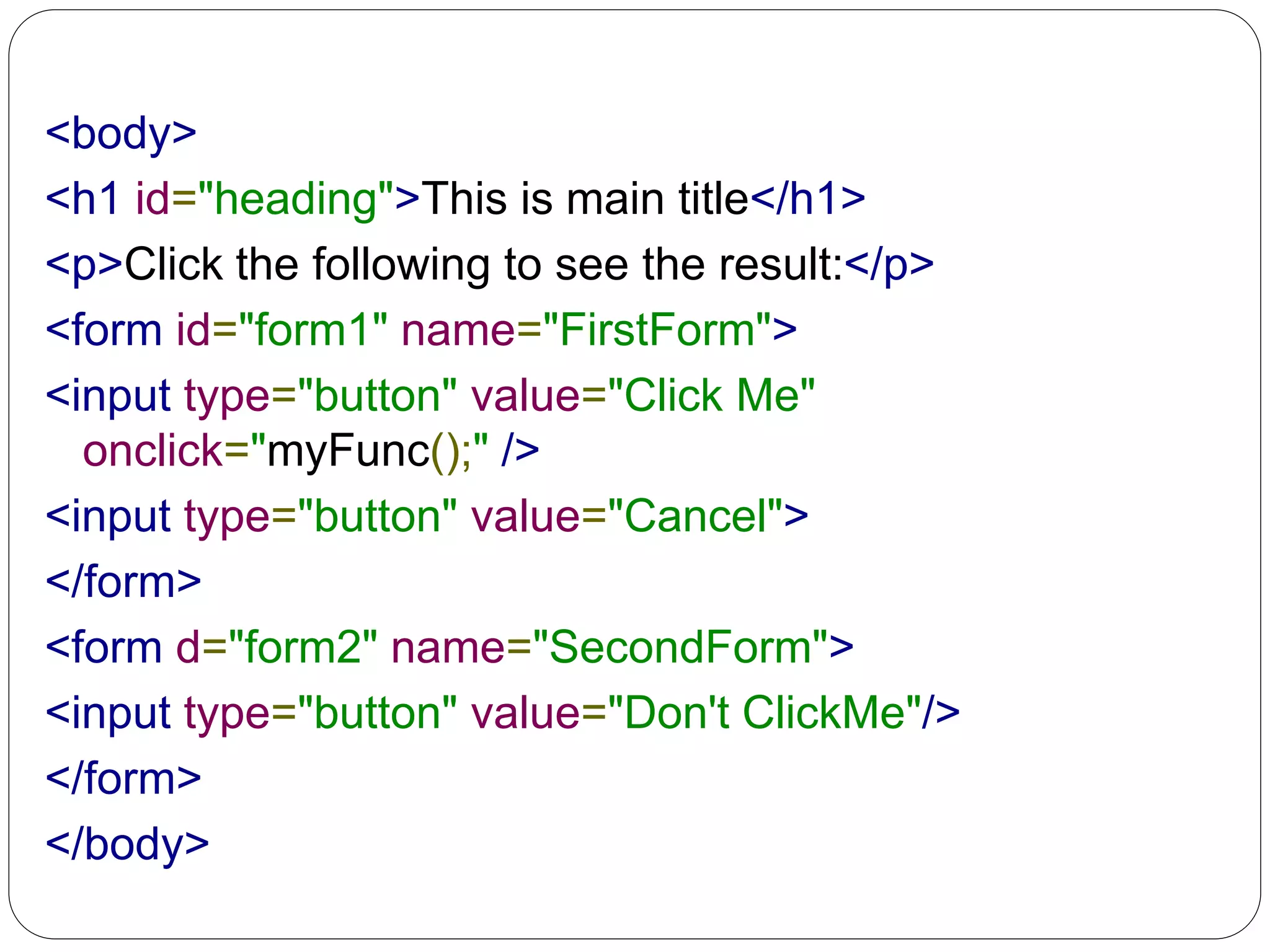
![JavaScript - The Date Object Date object is a datatype built into the JavaScript Created with the new Date( ) new Date( ) new Date(milliseconds) new Date(datestring) new Date(year,month,date[, hour,minute,second,millisecond ])](https://image.slidesharecdn.com/2-171219100455/75/2-java-script-dom-7-2048.jpg)
